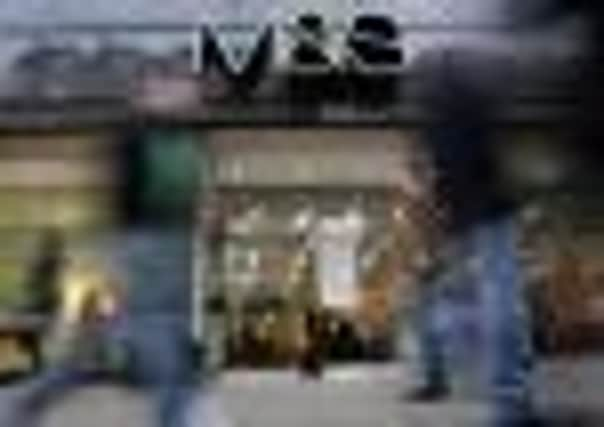This is not just a bank account, it’s an M&S bank account


For the last 120 years the status quo has been maintained. M&S sold underwear and banks provided the overdrafts to pay for them. However, last week the high street giant announced it was opening it was muscling in on the territory of the big five banks, by opening its own.
Collectively RBS, HSBC, Lloyds TSB, Barclays and Santander have a market share approaching 65 per cent, but since the financial crash of 2008, they have faced a series of challenges, like Sir Richard Branson’s Virgin Bank, from those determined to do a better job.
Advertisement
Hide AdAdvertisement
Hide AdSimon Rose, spokesman of Save Our Savers lobby group, says: “The established banks try to make everything as bland as possible. When it comes to providing service, they are far more concerned with their own convenience than the customer’s. My hope is that any new bank entering the marketplace will make the existing banks feel the need to compete.”
One new contender, Metro Bank – famous for opening seven days a week and offering free dog biscuits for customers’ pets – has just raised £126m from new investors and existing shareholders to enable it to add seven new branches in south-east England to the dozen in London opened in its first two years.
And now M&S. The store may have faced criticism for failing to keep up with latest styles in women’s clothing, but Rose says: “What M&S does have is a large degree of trust – and people have lost trust in so many financial institutions in recent years.”
The retail giant also has a useful platform for the new venture: M&S Money, owned and operated by HSBC since 2004, makes profits of £50m a year from three million customers with credit cards, travel money, loans, insurance and savings products, including ISAs. HSBC will also run the M&S Bank when the first branch opens in the M&S flagship Marble Arch store, presumably ahead of the Olympics. Branches will be open twice as long as traditional high street banks, mirroring store opening hours. A current account will be made available from this autumn and customers can pre-register their interest next month, with mortgages available at a later date.
Advertisement
Hide AdAdvertisement
Hide AdOver the next two years, M&S Bank plans to open banks in 50 of its branches, creating around 500 new jobs. Will Mayne, lead analyst in retail banking at Datamonitor, says: “M&S has a loyal captive audience who see real value in the brand. Its rivals, like Metro, have no existing customer base and even Virgin doesn’t start with the footfall and a regular interaction with customers.
“Not every customer is profitable for a retail bank, and we estimate it costs any bank around £80 per year to provide the core banking relationship. That money is recouped from a variety of sources – from lending out money on which depositors get negligible interest, from fees and overdraft charges.”
Middle England M&S customers are sensible with money. Investment bank Espirito Santo says nearly half of them are 46-plus and own their homes outright. Overdraft fees might not worry them greatly.
David Black, banking specialist at financial data website Defaqto.com, says: “I’m in little doubt that M&S Money will attract a significant customer base.
Advertisement
Hide AdAdvertisement
Hide Ad“Its very large customer base and excellent reputation stands it in very good stead to be a creditable alternative to established banks.
“The key product is the current account because it is utilised to build the relationship with the customer: it provides both regular contact and a great deal of knowledge about the customer’s financial status and capabilities, enabling a targeted cross-selling of appropriate products.”
Black says existing M&S Money products compare well with rivals: unsecured loans (£7,500- £15,000) are highly competitive from 6.0 per cent APR, while credit card rates (0 per cent introductory rate on purchases for 15 months, then 15.9 per cent APR) aren’t bad, although bettered elsewhere.
Savings products – easy access accounts with one-, two- and three-year fixes, and mini Cash-ISAs over similar periods – are above average, while M&S has built a good reputation for its travel money, without being the cheapest supplier.
Advertisement
Hide AdAdvertisement
Hide AdCertainly, M&S Bank launch raises the prospect that 2013 will see the Big Five banks facing real competition for the first time. Customers who feared the hassle of switching their account might finally be tempted to take the plunge.